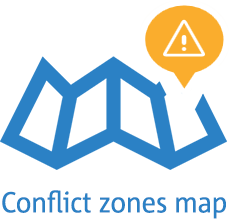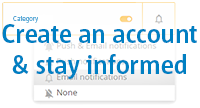EU Conflict Zone Alerting System
Following the downing of flight MH17, the EU developed the “EU Conflict Zone Alerting System” (the EU CZ Alerting System), an information alert system to achieve more consistency in the advice offered to airlines and to protect the interest of European citizens travelling inside and outside of Europe.
The EU CZ Alerting System has been active since early 2016 through cooperation among EU Member States, European institutions, the European Union Aviation Safety Agency (EASA) and other aviation stakeholders to share and distribute intelligence information on risks for civil aviation arising from conflict zones.
The objective of the EU CZ Alerting System is to join up available information and intelligence sources, and conflict zone risk assessment capabilities, to enable the publication in a timely manner of information and recommendations on conflict zone risks, for the benefit of all European Member States, operators and passengers. It complements national capabilities when they exist, by adding, when possible, a European level common risk picture and corresponding recommendations.
What risk mitigation measures are in place at EU level?
Risk mitigation measures at the EU level are implemented by the following actions:
 the publication of Conflict Zone Information Bulletins (CZIBs), which may contain operational recommendations, for countries that were deemed to have a “high” risk level as a result of the EU risk assessment, or in other cases where there is a need to make other information public;
the publication of Conflict Zone Information Bulletins (CZIBs), which may contain operational recommendations, for countries that were deemed to have a “high” risk level as a result of the EU risk assessment, or in other cases where there is a need to make other information public;- the publication of Information Notes on the European Information Sharing and Cooperation Platform on Conflict Zones (the Platform) based on the conclusions of the EU risk assessment with more detailed operational information and recommendations addressed to Member State representatives and their air carriers (on a need-to-know basis); and
- the circulation of conflict zones alerts through the Platform, including information and data on specific risk areas, conflict zones developments and incidents, which are distributed regularly to the members of the Platform.
How are risk assessments carried out at EU level?
Common risk assessments at the EU level take place on a regular basis, or exceptionally in case of urgent circumstances, under the lead of the Integrated EU Aviation Security Risk Assessment Group (the IRAG).
The IRAG is chaired by the European Commission and allows for the exchange of relevant information between EU Member States, the European External Action Service (EEAS) and the EASA. European air operators and airline associations also contribute to the preparatory work of the Group. The outcomes of the Integrated EU Aviation Security Risk Assessment Group support the decision-making process on possible mitigation measures including the issuance of Conflict Zone Information Bulletins (CZIBs) or Information Notes by EASA.
The IRAG is convened regularly on a quarterly or ad-hoc basis, as dictated by urgent circumstances. Each meeting is preceded by a preparatory meeting with the EU air operators and airline associations with the objective to gather any advance inputs, which are brought to the attention and inform the discussion of the Integrated EU Aviation Security Risk Assessment Group.
Participating representatives of EU institutions and bodies as well as Member States have developed a methodology to assess risks posed to civil aviation by conflict zones. The IRAG shares confidential information on threats and existing mitigation measures in place, with the aim of reaching consensus on the risk level and to identify necessary further risk mitigation measures.
What is the role of EASA?
EASA acts as coordinating entity for activities not directly under Member States or European Commission responsibility and initiates the drafting, consultation and publication of Conflict Zone Information Bulletins or EASA Information Notes both in cases of availability and unavailability of a common EU risk assessment.
The Agency in particular:
- Continuously monitors the development of conflict zones situation and conducts initial risk assessment;
- Collects and organises information, making proposals for course of action to the European Commission (DG MOVE) and the IRAG;
- Initiates the drafting and consultation of Conflict Zone Information Bulletins or Information Note;
- Publishes Conflict Zone Information Bulletins on its website and distributes Information Notes through the EASA CZ Platform;
- Acts also as the Administrator of the European Information Sharing and Cooperation Platform on Conflict Zones.
What is the role of the European Information Sharing and Cooperation Platform on Conflict Zones?
The Platform is a voluntary, cooperative partnership for the European aviation community that is designed to assist institutions and air operators conducting risk assessments in a timely manner in particular by providing conflict zone related information. The membership is open to eligible EU institutions, EASA Member States, as well their national commercial air carriers.
The purpose of the Platform is to support to the existing EU CZ Alerting System and particularly the IRAG to improve the availability and swiftness of relevant information exchange.

Conflict Zone Information Bulletin
A Conflict Zone Information Bulletin (CZIB) is a bulletin which can convey information or recommendations regarding Risks to civil aviation arising from Conflict Zones (RCZ).
 Stay informed on Conflict Zone Information Bulletins (CZIB):
Stay informed on Conflict Zone Information Bulletins (CZIB):
- Create an EASA account
- Follow the category "Conflict zone"
- Decide how you want to be notified
Disclaimer and Terms of Use
All information on the Conflict Zone Information Bulletin webpage is for general information purposes only, as similarly stated in the CZIB publications.
Information provided on the webpage should not be considered as the sole source of relevant information and should be used in conjunction with other relevant information, and in particular information issued by States.
Contact
Any inquiries regarding the Conflict Zone Information Bulletins, please use the CZIB contact us webform.